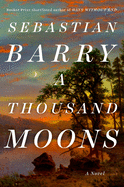
| Publisher: | Viking | |
| Genre: | Family Life, General, Literary, Fiction, Historical | |
| ISBN: | 9780735223103 | |
| Pub Date: | April 2020 | |
| Price: | $27 |
| Fiction |
by Sebastian Barry
On the last page of Days Without End, Sebastian Barry's readers anticipated peace for Thomas McNulty, his beloved John Cole and their adopted Lakota daughter, Winona. Their army service and the Indian Wars were behind them. In A Thousand Moons, a sequel that's also satisfying as a stand-alone, Winona narrates their story of working fellow soldier Lige Magan's farm, with Tennyson and Rosalee, freed from enslavement.
It's the 1870s, but in Paris, Tenn., "whitemen in the main just see slaves and Indians." Winona masters English grammar because "it was bad enough being an Indian without talking like a raven," and keeps the books for a lawyer. The makeshift family tends their tobacco crop and keeps to themselves, but trouble finds them. The governor is "trying to drag Tennessee back to hatred and hurt," and a marauding gang of "old beaten Rebs" flouts justice. Winona is assaulted and can't remember what happened, and Tennyson is beaten. Drawing on the legend of her Sioux mother's "fame of great bravery" and fearful that her men would be hanged if they confront the renegades, Winona determines to avenge the wrongs.
The lyric prose in Barry's eighth novel reminds readers that the Irish author has also written 14 plays and three poetry collections. Among the acts of brutality and injustice, A Thousand Moons is rich with tender passages. Winona treasures her family, "John Cole, the keel of my boat. Thomas the oars and the sails." In a book that doubles as historical fiction and a coming-of-age novel, the heroine hunts for justice, but also discovers truths about herself. --Cheryl McKeon, bookseller, Market Block Books, Troy, N.Y.
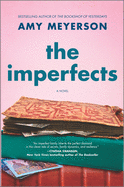
| Publisher: | Park Row | |
| Genre: | Women, Cultural Heritage, Family Life, Literary, Fiction, Siblings | |
| ISBN: | 9780778305071 | |
| Pub Date: | May 2020 | |
| Price: | $27.99 |
| Fiction |
by Amy Meyerson
Amy Meyerson's intriguing second novel, The Imperfects, begins with an unnamed, pregnant young woman receiving a secret gift in 1918 Vienna. In present-day Philadelphia, a Holocaust survivor named Helen dies, bequeathing her house to her daughter, Deborah, and her remaining estate to her grandchildren, Ashley, Jake and Beck. Beck also inherits a brooch with a large yellow stone, seemingly a piece of costume jewelry Helen favored.
When Beck gets it appraised, she's startled to learn the yellow stone is the 137.27-carat Florentine Diamond, part of the Austrian crown jewels and missing since 1918. And possibly worth $10 million. The appraisal sets off a chain of events, and Beck promptly receives letters from several parties--including the Italian and Austrian governments--who all claim the diamond belongs to them. The FBI seizes the stone in a civil forfeiture: "If the government knows a property was involved in a crime but doesn't know who committed the crime, they can... hold on to it until the court determines who it rightly belongs to." With that, Helen is called a jewel thief by the media. It's now up to her descendants to prove she didn't steal the diamond and that it rightfully belongs to them.
Meyerson based The Imperfects on events surrounding the real Florentine Diamond, weaving an absorbing version of what happened to fill in the holes historical accounts don't address. Helen's past is a story of love and courage and resilience during the worst of times. In the present, her heirs are dysfunctional and awfully hurtful to one another, but they eventually learn the most valuable treasure is a familial bond. --Elyse Dinh-McCrillis, blogger at Pop Culture Nerd

| Publisher: | Putnam | |
| Genre: | Women, Coming of Age, Literary, Fiction | |
| ISBN: | 9780525542353 | |
| Pub Date: | April 2020 | |
| Price: | $26 |
| Fiction |
by Jeni McFarland
For Jeni McFarland, who survived childhood sexual assault, talking about her trauma "was like a dam burst," she reveals in an interview with her publisher. "It was so cathartic writing about it that I couldn't stop." That horrific survival, further aggravated by being one of few residents of color in her Midwest farming town, inspires her debut novel, The House of Deep Water, in which McFarland populates River Bend, Mich., with a standout cast, including three reluctant returnees.
Linda arrives after six years in Houston, abandoning her mismatched husband. Within days, she's taken up with Ernest, years her senior. Paula appears next, newly engaged in Utah and hoping finally to get her divorce from Jared after she went AWOL 14 years ago, leaving him with her two daughters by another man--including her oldest, Linda--and a third whom she and Jared had together. Beth returns last, Ernest's only daughter by his Black ex-wife. Beth is divorced, unemployed after losing her fancy sous-chef job and has uprooted her two adolescent children from their comfortable Charlotte, N.C., home to cohabitate with her father and a now-pregnant Linda (whom Beth used to babysit).
McFarland entrusts Beth with the bulk of the narrative, speaking as Elizabeth when she's disclosing her heinous experiences of molestation by her father's friend and neighbor, and resurfacing as Eliza, a kinder, gentler personality Beth has kept buried in order to survive. Confronting the fragility of all relationships--parents, children, siblings, lovers, friends--McFarland creates a raw, intimate portrait of small-town U.S.A. Discomfort and denial are no longer viable excuses to turn away. --Terry Hong, Smithsonian BookDragon
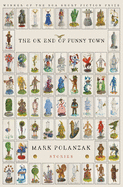
| Publisher: | BOA Editions | |
| Genre: | Short Stories (single author), Magical Realism, Absurdist, Literary, Fiction | |
| ISBN: | 9781950774050 | |
| Pub Date: | May 2020 | |
| Price: | $17 |
| Fiction |
by Mark Polanzak
Vintage travel brochure headlines separate the tales in Mark Polanzak's wildly imaginative story collection, The OK End of Funny Town. Sections like "Travel to Fantastic Places!" and "Witness Magical Things!" deliver, as promised, 19 weird and wonderful stories that are as captivating as they are discomfiting. Readers "Meet Fabulous Strangers!" in the opening story, "Giant." Townspeople are delighted when a giant moves into their village. "It wasn't an emergency to anyone. It was awe-striking," the narrator says. Their bonhomie turns to exasperation, however, when, after weeks of attempted communication and friendly gestures, the giant shows no inclination to return their overtures and, indeed, seems pretty ungrateful.
The title story, "The OK End of Funny Town," is one of the "Fantastic Places." The hapless narrator unsuccessfully tries to fix his "arrow-thru-the-head-gag." Determined to find another gag, he tries riding his unicycle on an oil slick and a bed of thumbtacks, and finally waves down a cab filled with clowns. How or why Funny Town became so is never explained, but the author hints at how the narrator arrived there. He tries to tell the cabdriver a joke starting, "There's this guy who moved to Funny Town after his fiancée left him at the altar... he wishes he could cry again, but he can't because it's impossible in Funny Town." The driver, unsympathetic, says, "We're all crying on the inside, man."
The remarkable revealed as unremarkable, the ridiculous covering up despair--these themes permeate Polanzak's tales. Visiting this tragicomic world, which won the 2020 BOA Short Fiction Prize, will reward those looking for an exciting and original new voice in fiction. --Cindy Pauldine, bookseller, the river's end bookstore, Oswego, N.Y.

| Publisher: | Orbit | |
| Genre: | Dystopian, Space Exploration, Apocalyptic & Post-Apocalyptic, Fiction, Science Fiction | |
| ISBN: | 9780316462860 | |
| Pub Date: | May 2020 | |
| Price: | $27 |
| Science Fiction & Fantasy |
by Laura Lam
Seeking a better future for humanity, five astronauts encounter danger and deception on the treacherous journey to a new planet in Laura Lam's feminist science-fiction thriller Goldilocks.
The future of Earth is bleak: sea levels have risen, women's rights are being steadily repealed and climate refugees are dying around the world. With the discovery of Cavendish, an Earth-like planet 10 and a half light years away, comes a chance for humanity to start anew. After being abruptly replaced by an all-male crew, the original all-female crew slated for the first mission to Cavendish takes matters into their own hands, launching in secret in a race to start the new world on their own terms: "The women were stealing a planet. They were stealing their future." But when ship systems begin to fail and secret plots are revealed, the entire mission is in jeopardy as the crew divides over life-and-death choices that will decide humanity's fate.
Combining hard science and an emotionally complex cast, Goldilocks is a thrilling, character-driven space opera infused with conversations about social injustice and environmental stewardship. Motivated by the future utopia they hope to build on Cavendish, the five women grapple with the potential sacrifices needed to make their dream a reality and whether the price of their dream can be justified. Lam (False Hearts; the Micah Grey Trilogy) has created a balanced narrative with equal focus on personal and scientific journeys, resulting in an intellectually and technically thrilling science fiction saga. --Jennifer Oleinik, freelance writer and editor
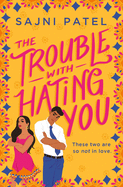
| Publisher: | Forever | |
| Genre: | Women, Romantic Comedy, Family Life, Romance, Contemporary, General, Multicultural & Interracial, Workplace, Fiction | |
| ISBN: | 9781538733332 | |
| Pub Date: | May 2020 | |
| Price: | $14.99 |
| Romance |
by Sajni Patel
In her first novel, The Trouble with Hating You, Sajni Patel creates a rewarding romance set in an intriguing world that combines proper second-generation Indian Americans with a Texan swagger. Liya Thakkar, a successful biochemical engineer in Houston, is seen as a failure in the eyes of her traditional father because she has her own apartment, has dated a number of men and refuses to get married.
Liya resents her father's dominance and her mother's inability to do anything but obey him, so she goes home rarely. Thus, she is blindsided to discover that her father has been trying to arrange her marriage to a man named Jay Shah, and she angrily refuses to meet Jay.
Within a few days, Liya is informed that her company is struggling financially and needs to bring in lawyers to help stave off pending lawsuits. And, to her horror, when the head of the legal team arrives, it turns out to be Jay. Jay, who uses his charisma to hide childhood trauma, is equally appalled to discover that he'll be working with the woman who insulted him and his mother by running out of the house rather than dine with them.
Exploring what it means to combine traditional Indian values with modern American mores, and the pressure placed upon Indian women to conform, The Trouble with Hating You is a romance with a great deal of depth. Patel's writing is detailed but approachable, bringing readers into Liya's world and exploring the many complicated feelings Liya has about her family and her upbringing. Children of immigrants are especially sure to relate, but this is a lovely story that anyone will enjoy. --Jessica Howard, bookseller at Bookmans, Tucson, Ariz.
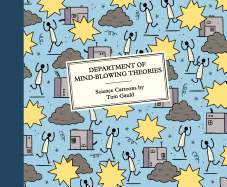
| Publisher: | Drawn & Quarterly | |
| Genre: | Form, Comic Strips & Cartoons, Literary, Comics & Graphic Novels, Humor | |
| ISBN: | 9781770463752 | |
| Pub Date: | April 2020 | |
| Price: | $21.95 |
| Starred | Graphic Books |
by Tom Gauld
Can science be funny? Looking at the pages of Eisner Award-winning humorist and cartoonist Tom Gauld's Department of Mind-Blowing Theories, the answer is a resounding yes. The book collects 150 one-panel cartoons originally drawn for his weekly strip in New Scientist.
Though originally created for an internationally recognized science and technology publication, Gauld's comics do not talk down to readers; in a word, they are meme-able. He draws in a minimalist style that communicates situational humor; even if a reader might not get every punchline, Gauld's work is sure to elicit more than a few grins (and maybe even a few grimaces). After all, one does not need to have a background in artificial intelligence to smile at the thought of a future where cars go from self-driving to being self-aware to self-righteous--until finally, they reach the point of self-doubting.
Similarly, in this influencer-driven world, pondering "What would it have been like if alchemists had Instagram?" might leave readers leaning into the hashtag #nevergiveup. As seen in this last scenario, Gauld's comics don't deal solely with science but cross into popular culture and also brim with literary and other humanities-based references. There's even a couple of retold fairy tales, including "The Three Little Scientists and the Big Bad Wolf" and a new take on "Goldilocks and the Three Bears." In any case, it's a great volume to flip through and flip around in--and by the end of it, 150 cartoons might not be enough. --Michelle Anya Anjirbag, freelance reviewer

| Publisher: | Holt | |
| Genre: | Biography & Autobiography, Women, American Government, National, Women in Politics, Political, Political Science | |
| ISBN: | 9781250252869 | |
| Pub Date: | May 2020 | |
| Price: | $27.99 |
| Starred | Biography & Memoir |
by Molly Ball
Most biographies covering a subject up to age 79 will be fairly complete. When that subject is Nancy Pelosi, a second volume might be necessary. Of course, for Democrats reading first-time author Molly Ball's Pelosi, an absorbing, unabashedly wonky portrait of the Speaker through her 2019 announcement that the House would begin impeachment hearings against the president, the book ends at just the right spot.
The daughter of a Democratic congressman turned mayor of Baltimore, Pelosi married straight out of college and had five kids. Her banker husband's job required relocating to San Francisco, where Pelosi won the first time she ran for Congress, in 1987. Her image as a "rich lady only playing at politics" (false) who had "San Francisco values" (true) would hound her even as she assumed the speakership in 2007. As the first woman to hold the job, Pelosi became the highest-ranking female politician in U.S. history.
Pelosi asks not "What makes her tick?"--Time political correspondent Ball concedes that her subject's interior life is "fundamentally off limits"--but "How did she pull that off?" Ball's answer: through tireless fundraising, shrewd negotiating and superhuman patience, all of which helped Pelosi do what was needed to pass the Affordable Care Act and twice reclaim the Democratic majority in the House. Although Pelosi was written with the Speaker's cooperation, the book isn't fawning: it doesn't pretend that its subject always got it right, and Ball acknowledges Pelosi's icy demeanor. Apparently, the "click-click-click of her approaching heels reminded [House] members of the theme from Jaws." --Nell Beram, author and freelance writer
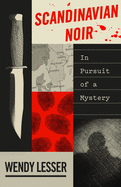
| Publisher: | Farrar, Straus and Giroux | |
| Genre: | Travel, Literary Criticism, Europe, Scandinavia (Finland, Norway, Sweden), Scandinavian, Mystery & Detective Fiction, European, Books & Reading | |
| ISBN: | 9780374216979 | |
| Pub Date: | May 2020 | |
| Price: | $27 |
| Essays & Criticism |
by Wendy Lesser
Since the early 1980s, critic Wendy Lesser (The Amateur: An Independent Life of Letters) has been an avid consumer of the growing body of mystery and thriller novels set in Sweden, Norway and Denmark. Scandinavian Noir: In Pursuit of a Mystery is both an enthusiastic appreciation of the genre and a pleasurable work of travel writing, in which Lesser compares her lived experience in the Scandinavian countries with the fictional world she calls "my imaginary Scandinavia."
In sections that literally take the reader from A ("Alcohol") to Z ("Zealous journalists"), Lesser explains how dozens of authors, including the late Swede Stieg Larsson (The Girl with the Dragon Tattoo) and Norwegian Jo Nesbø (author of the Harry Hole series), along with many lesser-known writers, have created a fully realized picture of Scandinavian society through their mystery offerings.
In the second half of Scandinavian Noir, Lesser shifts from literary critic to tourist, signaled by a shift in narrative voice from first person to third. From her base in Stockholm in the summer of 2018, she traverses Scandinavia, experiencing first hand life in countries that have become real for her on the page. Though she finds Copenhagen "definitely a bit grungy" compared to Stockholm and Oslo, Lesser's portrait of these countries generally is positive.
Whether readers are transfixed by the spectacular exploits of Lisbeth Salander, or impressed with the doggedness of Kurt Wallander, or even if they've never encountered these characters, they'll find in Scandinavian Noir an entertaining journey into the world of these mysteries and the cultural milieu that spawned them. --Harvey Freedenberg, freelance reviewer

| Publisher: | Simon & Schuster | |
| Genre: | History & Criticism, Television, Media Studies, United States, 20th Century, History, Social Science, Performing Arts | |
| ISBN: | 9781501137808 | |
| Pub Date: | May 2020 | |
| Price: | $27.50 |
| Performing Arts |
by David Kamp
The scene was set: in the 1960s, it was recognized that young children of color weren't keeping up academically with their white peers, and studies were showing that the preschool years were more developmentally critical than educators had previously realized. Meanwhile, with the right enticement, toddlers were proving capable of seemingly effortless learning. As Children's Television Workshop (CTW) cofounder Joan Ganz Cooney puts it in David Kamp's enchanting Sunny Days: The Children's Television Revolution that Changed America, "Every child in America was singing beer commercials. Now, where had they learned beer commercials?"
In galloped Cooney and her team of visionaries to harness the power of television to address the learning gap between inner-city children and their white counterparts. Having secured both corporate and government funding and the services of a brilliant young puppeteer named Jim Henson, the CTW created Sesame Street. Not only was it an out-of-the-gate hit that featured television's first truly multicultural cast, but research suggested that kids who watched the show were indeed learning their ABCs and 123s. Other programs, segments and specials seeking to teach children academic basics and self-esteem-building skills followed, on public and commercial television, with the CTW's imprimatur and without it.
For readers of a certain generation, Kamp's (The United States of Arugula) book will offer a thrilling flashback effect, and the book's archival photos only enhance the time-tripping experience. For millennial readers, Sunny Days will be both a captivating glimpse at a revolutionary time and a blueprint for what's possible with a little seed money, civic-mindedness, feathers and glue. --Nell Beram, author and freelance writer
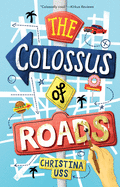
| Publisher: | Margaret Ferguson/Holiday House | |
| Genre: | Art, Transportation, Parents, Family, Cars & Trucks, Juvenile Fiction | |
| ISBN: | 9780823444502 | |
| Pub Date: | April 2020 | |
| Price: | $17.99 |
| Starred | Children's & Young Adult |
by Christina Uss
In her sophomore middle-grade novel, Christina Uss uses vivid language and unforgettable characters to tell an uplifting, hopeful story about a traffic-obsessed, motion sickness-prone boy.
For years, 11-year-old Rick Rusek has studied Los Angeles's traffic problems and crafted ways to fix them. He hopes his "Snarl Solutions" will improve traffic flow enough that his parents' catering business won't have to close. Knowing he needs help, Rick joins his neighbor's Girl Scout troop, which is creating a public art project led by a famous artist who's related to the head of L.A.'s Department of Transportation. Deeming himself the "Colossus of Roads," Rick uses the project to move his own agenda forward. But being a vigilante isn't easy, and to succeed Rick will have to fight anti-car cyclists, a group of super-slow-driving grandparents and his chronic, burdensome motion sickness.
In The Colossus of Roads, Christina Uss (The Adventures of a Girl Called Bicycle) masterfully demonstrates the complications of living with a chronic illness, including missed opportunities, financial stressors and limited medical care. Not only does Uss depict a family struggling, she also shows how they make the best of a tough situation, like turning a tasteless economical meal into family night in front of the TV. Uss's imaginative writing adds an extra dimension to her storytelling: what could have been simple descriptions of a traffic-alert website become green "liquid peace" and red "bleeding scabs picked from a skateboarder's knees." This colorful language, combined with quirky, memorable characters, like a bright-red Cadillac-driving Abuelita, round out a charming story about resilience and persistence. --Lana Barnes, freelance reviewer and proofreader
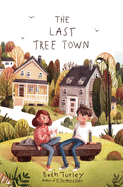
| Publisher: | Simon & Schuster Books for Young Readers | |
| Genre: | Friendship, People & Places, Family, Social Themes, United States - Hispanic & Latino, Depression & Mental Illness, Juvenile Fiction, Siblings | |
| ISBN: | 9781534420649 | |
| Pub Date: | May 2020 | |
| Price: | $17.99 |
| Children's & Young Adult |
by Beth Turley
Navigating new situations is hard. Starting high school? Really hard. Also hard: being the younger sibling of a brand-new high schooler who doesn't want to hang out anymore. Such is the bummer facing 12-year-old Cassi Chord, who narrates Beth Turley's finespun middle-grade novel The Last Tree Town.
When Cassi begins seventh grade, she finds herself in a Math Olympics class with a boy named Aaron Kale, who has just moved to Mapleton. His father has been relocating them from town to town, each named for a tree, ostensibly (but not exclusively, it turns out) because he's writing a book about "tree towns."
Not even Cassi's loyal cohort, which comes to include Aaron, can take her mind off her older sister, Daniella, whose sullenness began when school started and won't let up. Cassi has always looked up to Daniella, envying her cool and the way she resembles the Puerto Rican side of the family. (Meanwhile, Cassi burns easily in the sun and has reddish "scarecrow hair.") Cassi starts reading Daniella's diary in hopes of finding out what's behind her sister's "growing pains," as their mother puts it, although Cassi thinks there's more going on. She sees in Daniella's face "my sister but not quite. Like a smudged pencil drawing of herself."
The Last Tree Town charts one year in Cassi's life; in place of a conventional plot, the passage of time moves the story along. Turley (If This Were a Story) is a careful storyteller who has written a tender novel about how negotiating fine lines--between friendship and a crush, between sadness and something crueler--is part of the mixed bag that is growing up. --Nell Beram, freelance writer and YA author